Dressage rider Lucy Cartwright shows you how to create more impulsion with four simple exercises
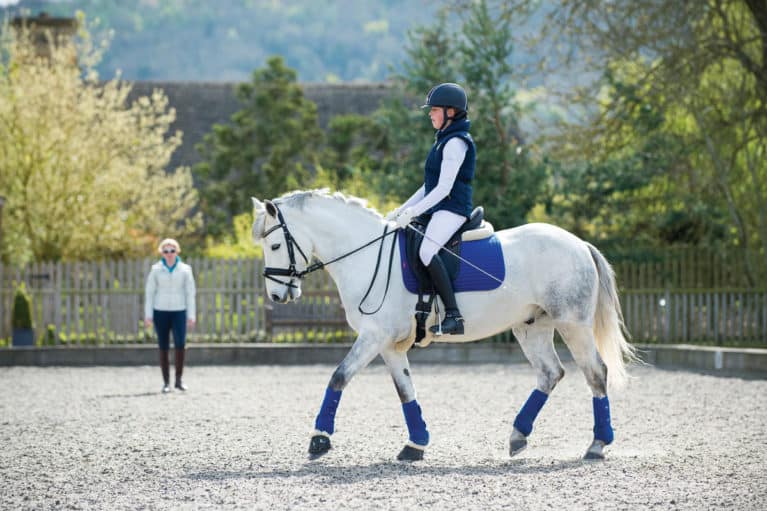
Having a horse who responds immediately to a gentle leg aid isn’t just a pleasure, it’s essential if you want to develop his schooling. If your horse lacks impulsion, you’ll struggle to improve any other weak areas – for example, straightness and rhythm. By tackling his response to your aids, you’ll find that everything else becomes easier and more enjoyable for you both.
The best way to teach your horse to be more responsive and add energy to his paces is to go back to basics, which means focusing on a schooling fundamental – transitions. They’re beneficial for any horse, but they’ll be your best friend if yours is laid-back. The good news is there are lots of different and fun ways to use transitions to improve his way of going, so it won’t be a boring task.
Top tip
Give your aids quietly and consistently, and be quick to correct your horse if he doesn’t respond in the right way. Timing is all-important.
The right start
Consistency is the key to teaching your horse to have more impulsion. It’s important to establish ground rules as soon as you get in the saddle to warm up, so your horse knows what’s expected of him. The fundamental principle is that when you give him an aid he must respond immediately. If he doesn’t, ask again straightaway using a stronger aid.
Are you an old nag?
If you feel frustrated at your horse’s lack of energy or reluctance to go forward, it can be easy to fall into the trap of constantly nagging him with your leg, but you’ll end up working harder than he does and he’ll switch off even more.
Nagging with the legs can soon become a habit, so be strict with yourself and only use your legs when you need to. If you feel yourself starting to nag, it means your horse is losing energy, so use transitions to get him thinking forward again.
impulsion versus speed
Don’t confuse speed with impulsion. Impulsion is controlled power and to achieve it your horse needs to push from his hindquarters into the rein contact, rather than running forward with more weight on his forehand.
Top tip
Half-halts will help you rebalance the energy you’ve created through riding lots of transitions. They’re a great way to harness his energy and create more engagement.
Work in progress
Transitions help you create impulsion, but you need impulsion to achieve good-quality transitions. This means that if your horse is very laid-back you’ll find yourself in a chicken and egg scenario to begin with, and the transitions may feel lumpy and horrible. Don’t worry – focus on achieving a reaction to your leg aid and you can then move your attention to polishing the transitions themselves.
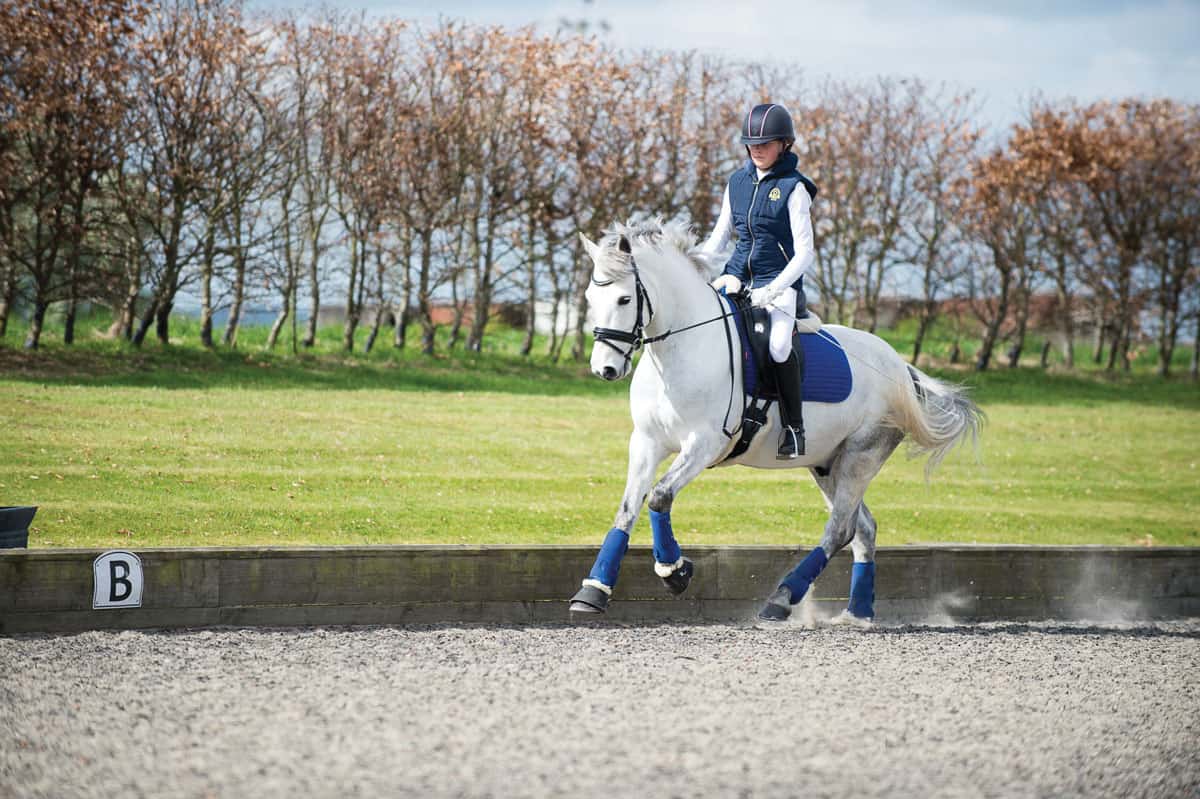
Reaction time
It’s important to test how responsive your horse is to your leg aids.
- start in halt and squeeze with your legs to ask him to walk forward
- if he reacts, that’s great, but if not use a stronger leg aid
- for the first few attempts, you may need to back up your leg aid with a tap of your schooling whip and give a click with your voice – he should soon get the idea and respond to your first aid
- once you’ve sharpened up his reactions, go back to using a subtle aid, but if you feel that he stops listening to you or his energy levels drop, don’t be afraid to get after him again
Top tip
If you have to reinforce your first aid with a stronger one, be prepared for your horse to move forward more quickly than you expect and ensure you don’t catch him in the mouth. Keep a soft hand and arm so you don’t accidentally punish him when he reacts positively to your aid.
Take responsibility
Your horse will be on a steep learning curve, so it’s important to play your part in his re-education. This means pre-empting situations where he’s likely to fall behind your leg, such as when making downward transitions. Even in a downward transition he should step forward actively into the new pace and keep the same rhythm, but laid-back horses are prone to switching off and losing power.
To avoid this happening, you need to prepare carefully for the transition…
- ride a series of half-halts to rebalance your horse and engage his hindquarters, which will help him push forward even though he’s slowing down
- keep your legs closed around his sides as you ask for the transition
- as soon as he responds, ride positively forward in the new pace
Exercise: all change
Riding a quick succession of transitions with only a few strides of each gait between them will really focus your horse’s attention…
- On the long side of the arena, ride five steps of walk, six steps of trot, five steps of walk, then ask for halt.
- Change the pattern, so ask for four steps of walk, five steps of trot, four steps of walk, then make your transition to halt.
- Do the same on a circle.
- Mix things up by making a transition at every marker around the arena.
- Make regular changes of rein and ensure you ride an equal number of transitions in each direction.
Exercise: better by half
A variation of transitions that’s brilliant for creating more energy is the almost transition, which is essentially a half-halt. It involves giving the aid for a downward transition, but asking your horse to go forward again before he actually changes pace…
- Close your hands on the reins, still the movement of your body and squeeze with both legs on the girth to encourage your horse to listen to you and engage his hindquarters.
- As soon as you feel him steady, allow him forward with your hand and give him a squeeze with your legs to ask him to step forward actively.
Top tip
When making a transition from trot to walk, some horses use the cue of sitting trot to collapse into walk. Be prepared for this and give him a touch on the quarters with your schooling whip if necessary.
Exercise: walk the line
Test your horse’s reactions to your leg aids while working on bend, rhythm and suppleness, too…
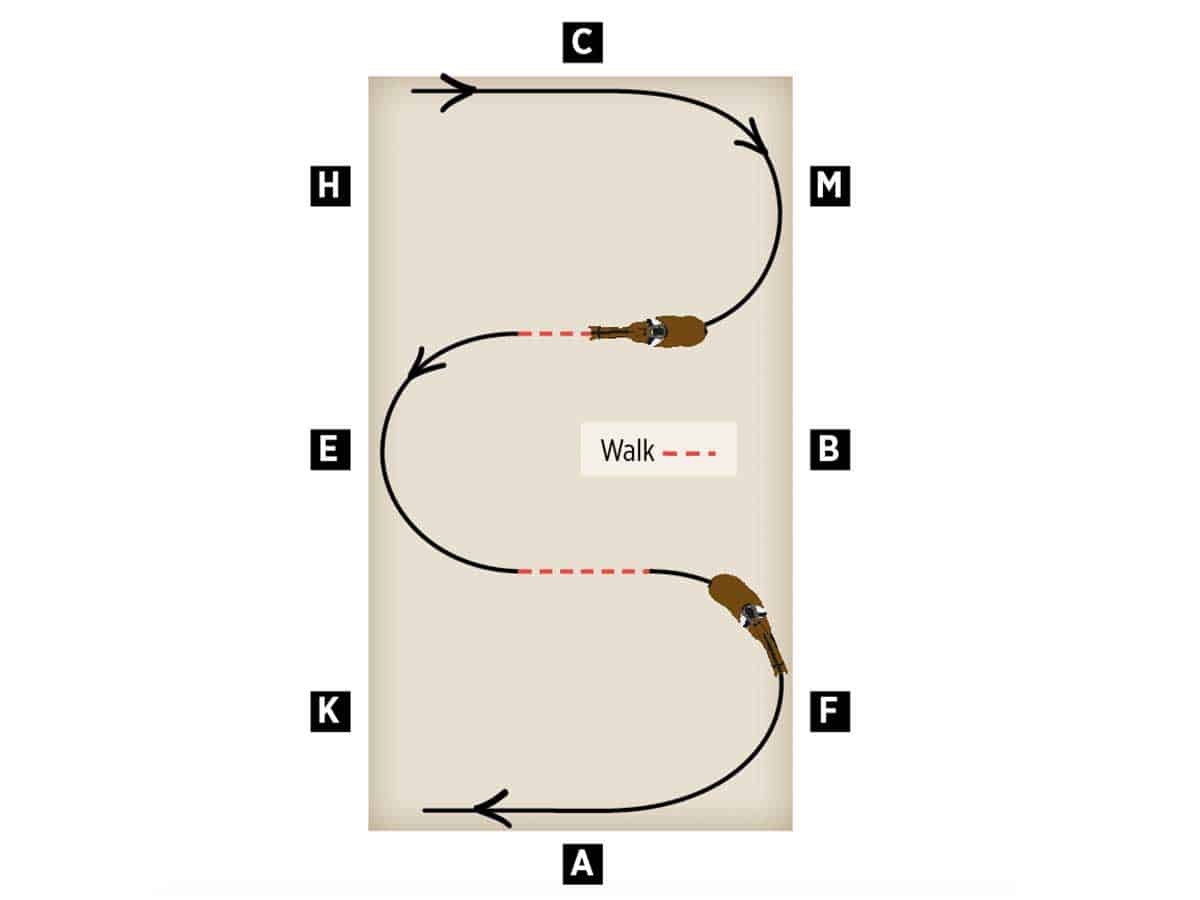
- In trot, ride a three-loop serpentine (four loops if your arena is 20x60m).
- Each time you cross the centre line, make a transition to walk. Walk for three steps, then trot again.
- Increase the degree of difficulty by adding another loop.
- When you can achieve this comfortably, try it in canter, making a trot transition over the centre line.
Exercise: corner clinic
You may find he runs out of steam through turns if he’s laid-back. To solve this, you need to get him thinking forwards before the corner and, as with your transitions, half-halts will help you…
- As you approach the quarter marker before the corner, ask for a half-halt to rebalance your horse and encourage him to engage his hindquarters.
- Just before the corner, ask for a little inside flexion and apply your inside leg on the girth to create bend.
- Guide him around the corner by supporting him with your outside rein and opening your inside hand a little – resist the temptation to bring it back towards your body.
- Use your outside leg behind the girth to control his quarters and keep your inside leg on the girth to maintain impulsion.
Keep a contact
If your horse is laid-back, it can seem counter-intuitive to apply pressure on the reins, but don’t be tempted to throw your contact away. Having a consistent, elastic contact will help you develop impulsion because it harnesses the energy being created by his hindquarters. It’s important to encourage your horse to take the contact forward by asking in the right way. Carry your hands in front of you and focus on keeping them as still as possible. Don’t be tempted to try to pull him into an outline, simply squeeze the reins softly to create a conversation with his mouth and encourage him to soften.
Straighten up
Other areas of your schooling will be easier to improve when your horse has good energy – for example, he’ll be straighter and less likely to wobble when he’s going forward. To check how straight he is, ride down the three-quarter line so he can’t use the arena fence to support him. Look up, focus on a point straight ahead and push with both legs into a soft rein contact. To help you, imagine you’re riding down a tunnel with a wall on either side.
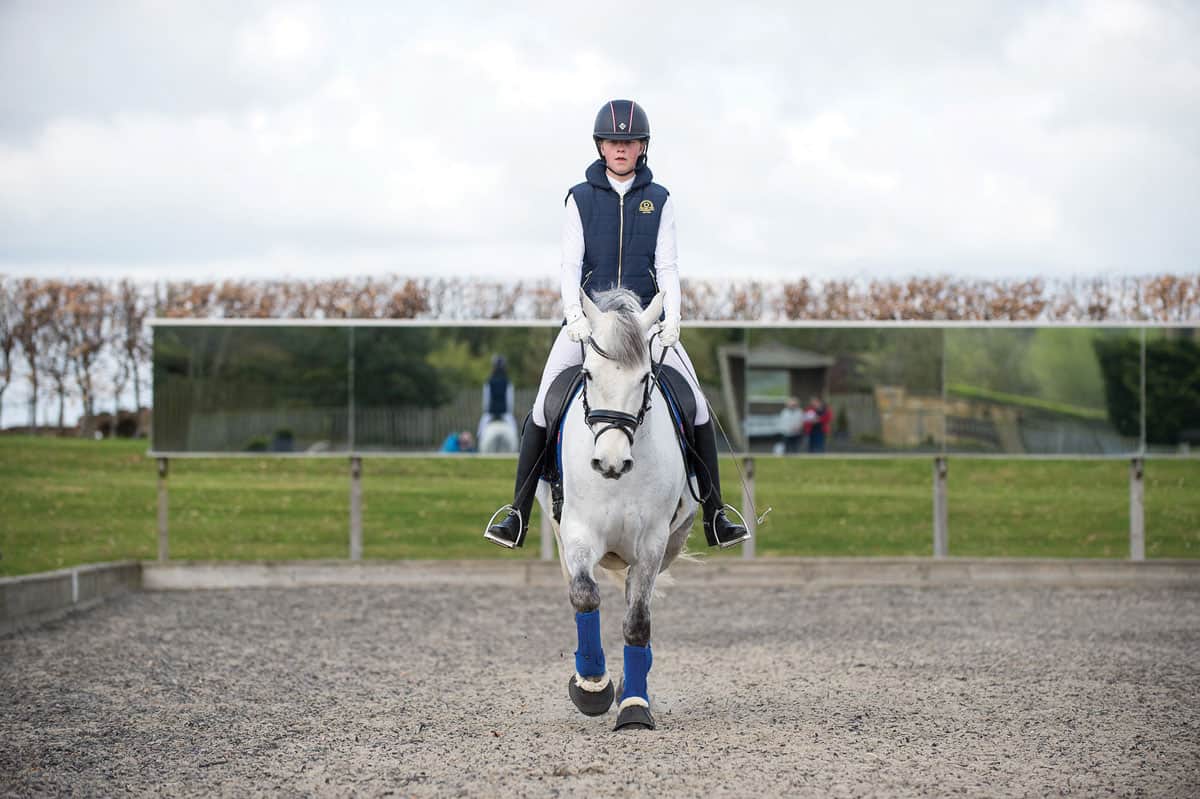
Don’t forget that even though you’re working on straightness, impulsion is still your aim, so pop in a few transitions to maintain his energy.
Top tip
Don’t lose focus when giving your horse a break or cooling him down at the end of a session. Think about the quality of his work and ensure he’s still marching forward so he doesn’t switch off and think his work is done. The same applies when you’re out of the school – don’t let him ignore your aids.
Your Comments
One thought on “Make your horse more responsive”
Leave a Reply
You must be logged in to post a comment.




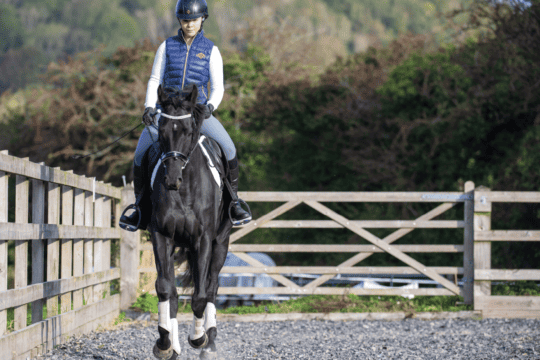
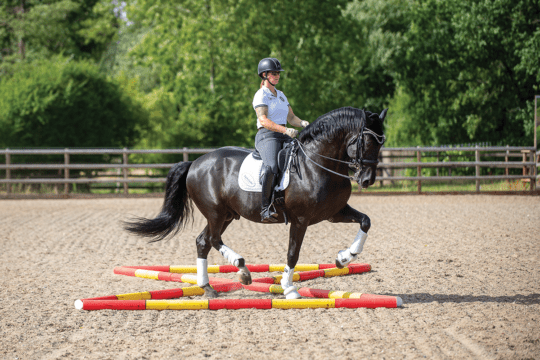



What a great article, well written and well explained. It has made me understand the great potential of the half halt and how useful it is in the education of the horse. Thank you